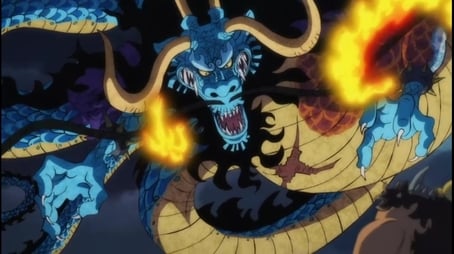
Sorry, we have not watched this yet.

While Usopp is looking for allies in Wano Country, Shutenmaru and the Mt. Atama Thieves plunder Okobore Town. Jack suddenly arrives at Okubore Town and confronts Shutenmaru. Shutenmaru and Jack quickly get into a fight, but are interrupted when Kaido flies in his dragon form.
Sorry, we have not watched this yet.